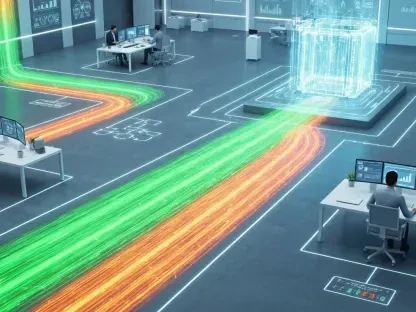I’m thrilled to sit down with Chloe Maraina, a trailblazer in the realm of business intelligence and data science. With a keen eye for crafting compelling visual stories from complex datasets, Chloe brings a unique perspective to the future of data management and digital infrastructure. Today, we’ll dive into her insights on sustainable technology, the evolving role of AI in the industry, and how innovative companies are shaping the landscape of high-performance computing with an eco-conscious approach.
How did your passion for data science lead you to focus on digital infrastructure, and what excites you most about this field?
My journey into data science started with a fascination for uncovering hidden patterns in big data, and over time, I realized that digital infrastructure is the backbone of making that data actionable. What excites me most is the intersection of technology and sustainability—how we can build systems that not only handle massive computational demands but do so with minimal environmental impact. It’s about creating a future where innovation doesn’t come at the cost of our planet.
Can you share your perspective on what makes a company stand out in the digital infrastructure space, especially in terms of balancing performance and sustainability?
A standout company in this space is one that prioritizes both cutting-edge technology and a deep commitment to reducing its carbon footprint. It’s about designing facilities that can support high-performance applications like AI and cloud computing while integrating renewable energy sources and efficient cooling systems. The real differentiator is when a company can prove that sustainability isn’t just a buzzword—it’s a core part of their operations and strategy.
What role do you see AI playing in the future of digital infrastructure, and how should companies prepare for this shift?
AI is becoming a foundational industry, almost like electricity was a century ago. It’s driving unprecedented demand for computing power, which means digital infrastructure must evolve to support these workloads. Companies need to invest in scalable facilities that can handle high-density computing while anticipating the unique energy and cooling challenges AI brings. Preparation also means staying ahead of the curve with partnerships and innovations that cater specifically to AI-driven applications.
How do you think major collaborations with tech giants influence the design and operation of modern data facilities?
Collaborations with major players push the boundaries of what’s possible. When you’re working with companies that demand massive AI clusters or high-performance cloud solutions, you’re forced to rethink everything from power distribution to data security. These partnerships often lead to bespoke designs—facilities tailored to specific needs—that can set new standards for efficiency and scalability in the industry.
In your view, what are some of the biggest challenges in meeting the energy demands of high-performance computing while maintaining an eco-friendly approach?
The biggest challenge is the sheer scale of energy required for high-performance computing—it’s enormous. Balancing that with sustainability means finding innovative ways to source renewable energy, optimize cooling systems, and recycle waste heat. It’s a complex puzzle, because you can’t compromise on uptime or performance, yet you’re under pressure to minimize environmental impact. It takes bold investment in new technologies and a willingness to rethink traditional approaches.
How important is financial backing in scaling up digital infrastructure, and what does significant investment signal about a company’s potential?
Financial backing is absolutely critical. Scaling up means building new facilities, adopting advanced technologies, and expanding capacity—all of which require substantial capital. When a company secures significant investment, it signals trust in their vision and business model. It shows that the market believes in their ability to deliver on promises, whether that’s through sustainable practices, cutting-edge solutions, or meeting the growing demands of clients.
What innovative strategies or technologies do you think will shape the next generation of data centers?
I think we’ll see a surge in technologies like liquid cooling and modular designs that make data centers more efficient and adaptable. There’s also a growing focus on integrating with local energy grids to use surplus renewable energy. Beyond tech, strategies like co-locating facilities near industries that can use waste heat—like heating greenhouses or district systems—will become more common. It’s all about creating a circular economy within the infrastructure itself.
What is your forecast for the future of sustainable digital infrastructure over the next decade?
I believe we’re on the cusp of a major transformation. Over the next decade, sustainable digital infrastructure will become the norm, not the exception. We’ll see stricter regulations pushing for net-zero operations, and companies that can’t adapt will fall behind. At the same time, advancements in AI and energy tech will make it easier to build facilities that are both powerful and green. My hope is that this becomes a global standard, where sustainability and high performance go hand in hand.









